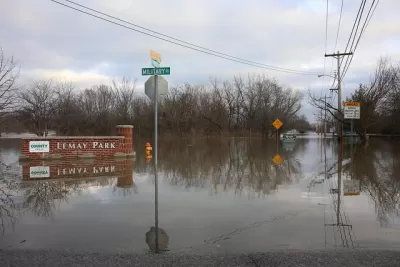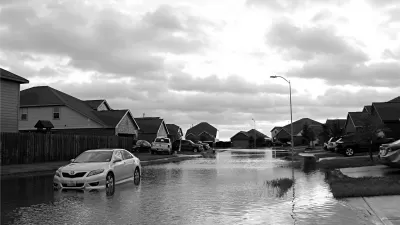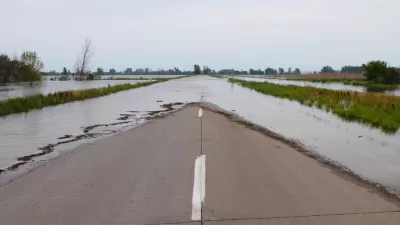More Americans are moving to high-risk flood zones as environmental deregulation wins the day.

Significant residential and commercial development is increasing the population in flood zones around the country, according to an analysis by Governing.
"Nationally, the number of Americans living in these high-risk areas in 2016 climbed 14 percent compared to those living in the same neighborhoods in 2000. That's actually faster than in areas outside of flood zones, where the population increased 13 percent … In fact, nearly all states recorded net population gains across their FEMA-designated floodplains in recent years."
The federal government has taken significant steps to allow more development in floodplains—like scrapping the Flood Risk Management Standard and scaling back the Waters of the United States Rule—but cities are guilty of trying to skirt restrictions as well, as writer Mike Maciag details. And for people already living in flood zones, it's easier to get disaster assistance than relocation assistance.
In a case study of South Carolina's Johns Island, Maciag concludes that better coordinated planning among jurisdictions could result in more holistic protection of watersheds and safer development. "The best solution would be a unified, interconnected drainage plan for the entire island rather than one that has developers accounting only for their individual properties," he suggests.
FULL STORY: RISKY WATERS

Alabama: Trump Terminates Settlements for Black Communities Harmed By Raw Sewage
Trump deemed the landmark civil rights agreement “illegal DEI and environmental justice policy.”

Planetizen Federal Action Tracker
A weekly monitor of how Trump’s orders and actions are impacting planners and planning in America.

Why Should We Subsidize Public Transportation?
Many public transit agencies face financial stress due to rising costs, declining fare revenue, and declining subsidies. Transit advocates must provide a strong business case for increasing public transit funding.

Understanding Road Diets
An explainer from Momentum highlights the advantages of reducing vehicle lanes in favor of more bike, transit, and pedestrian infrastructure.

New California Law Regulates Warehouse Pollution
A new law tightens building and emissions regulations for large distribution warehouses to mitigate air pollution and traffic in surrounding communities.

Phoenix Announces Opening Date for Light Rail Extension
The South Central extension will connect South Phoenix to downtown and other major hubs starting on June 7.
Urban Design for Planners 1: Software Tools
This six-course series explores essential urban design concepts using open source software and equips planners with the tools they need to participate fully in the urban design process.
Planning for Universal Design
Learn the tools for implementing Universal Design in planning regulations.
Caltrans
Smith Gee Studio
Institute for Housing and Urban Development Studies (IHS)
City of Grandview
Harvard GSD Executive Education
Toledo-Lucas County Plan Commissions
Salt Lake City
NYU Wagner Graduate School of Public Service





























